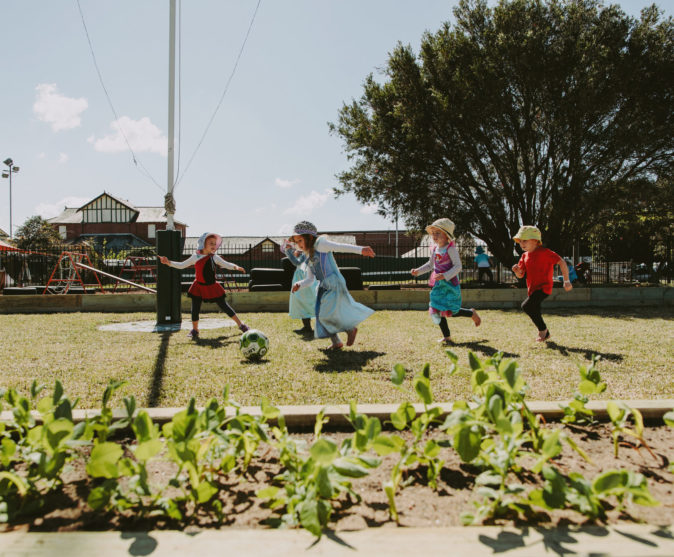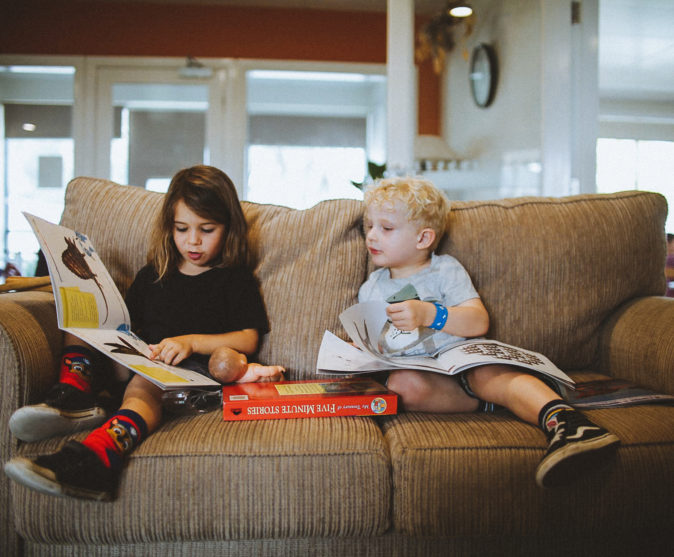
Sensory Integration: Tips to Consider
Indiana Resource Center for Autism
Contributed By Kim Davis and Melissa Dubie
Sensory processing is the “procedure in which we take in sensory messages from our bodies and surroundings”. Then we interpret these messages and organize our purposeful responses. This occurs when information about sensations is passed back and forth between the central nervous system (CNS) and nerves in the brain and spinal cord, and the peripheral nervous system with the nerves that are outside the CNS” (Kranowitz, 2004). Sensory intake is happening constantly to each of us as we move through our daily endeavors and we respond accordingly. We receive all input through our senses, via seeing, hearing, smelling, tasting, and touching and through our body centered senses of touch (tactile/protective), movement and gravity (vestibular), and body position (proprioceptive). Each sense acts individually and in union with the others to send us information about our environments and our body in each environment.
To understand how the senses all work together, imagine all that happens within our bodies automatically (if our CNS is intact) when we simply walk up the stairs with our morning cup of coffee. Visually we see the stairs and begin to lift our foot, this involves proprioceptive and vestibular senses as well as tactile. The smell of the coffee is noticed and we take care not to spill it as we ascend. We may hear voices of colleagues, feel our clothes, touch a railing, or have hot coffee slosh onto our hand, yet we continue to shift our weight to lift our legs alternately to continue up the steps. Each sense is called into play and is necessary for successful completion of this activity. In everything we do, messages are constantly being sent and interpreted by our system in order to allow us to proceed successfully.
For some individuals, especially those with an autism spectrum disorder, there may be sensory processing dysfunctions or difficulties. This is the “inability to respond appropriately to ordinary experiences and occurs when the CNS processes sensations inefficiently” (Kranowitz, 2003). Presently there is not one specific cause for sensory dysfunction, but it can cause tremendous misperception from those who support these individuals. Children with ASD may often experience an inability to respond ‘appropriately’ and be seen as having challenging behaviors or obsessions. Basically the degree and intensity of the input/output don’t match. Examples of being overloaded may look like the following in various areas:
Visual Input
|
- Stares at spinning objects.
- Spins their own bodies.
- Turns opposite direction from where teacher is lecturing.
- Demands to wear sunglasses indoors.
- Extremely organized or unorganized room (i.e. knows when an object has been slightly moved).
- Looses place when reading.
- Gives no eye contact or looks beyond person’s face.
- Trouble locating desired toy on cluttered shelf.
- Turns or tilts head when reading across a page.
- Misjudges spatial relationships so bumps into people or things.
|
Auditory Input
|
- Covers ears for a fire drill or when class is loud.
- Runs from loud area.
- Complains of noises in room or outside of window (i.e. lawn mower, heat blower, insects on window, students writing on paper).
- Covers ears in the cafeteria or cannot go into the gym when there are many people in it.
- Demands that dad puts “Rain X” on the windows so won’t have to use windshield wipers when it rains.
- Doesn’t respond to verbal prompts when putting on noisy clothes (i.e. sweat pants).
- Hums or sings to self.
- Demands that only one person talks at the dinner table.
- Talks louder than anyone in the class.
- Prefers very loud music or none at all in the car.
- Runs out of restroom as toilet flushes.
|
Tactile Input
|
- Throws arms back when about to be picked up by adult or pulls away when trying to hold child’s hand.
- Is always hanging on adult or laying between his box spring and regular mattress.
- Avoids touching certain surfaces or textures (i.e. fabrics, carpets).
- Prefers to touch specific fabrics (i.e. ladies hose).
- Dislikes getting hands or feet messy (i.e. sand, creams, paint).
- Touches everything in sight.
- Avoids being touched on the face, hair or head (i.e. washing face, hair cut).
- Doesn’t react to pain such as cuts, shots, bruises, or breakage of bones.
- Person may bite his or her own skin.
- Reacts negative when approached from behind.
- Wears shorts even in extreme cold temperature.
|
Taste and Smells
|
Taste
- Won’t eat certain foods (i.e. texture or taste) or eats extreme tasting foods (i.e. lemons, hot sauce).
- Gags when told to eat food doesn’t like.
- Licks or tastes playdough or toys.
Smells
- May say “you stink” to staff when wearing a strong perfume or cologne or if can smell onions on staff’s breathe from lunch.
- On the opposite extreme, student may smell everything they touch to become orientated and comfortable with the object or thing.
- Breathes through their mouth instead of their nose.
- Won’t visit certain environments (i.e. farms, petting zoos, fish stores).
- Does not mind smell of own bowel movement or dirty diaper.
- Won’t use the restroom at school.
|
Proprioceptive Input
(Difficulty interpreting sensations from the muscles, joints, ligaments, and tendons) |
- Pulls, twists, or chew on things (i.e. shirt, gum, pencil).
- Frequently breaks toys or hurts classmates when didn’t mean to.
- Leans, bumps, trips or crashes into objects.
- Walks along touching walls.
- Too much pressure when writing (i.e. writes letter over and over again until puts a hole in paper).
- Deliberately falls or crashes into things.
- Constantly seems to “physically tackle” everything.
- Stands too close when talking to others.
- Walks stiff and uncoordinated.
- Pulls on fingers or crack knuckles.
|
Vestibular Input
(Over or under sensitive to balance and movement sensations) |
- May seem to be a “thrill seeker” (i.e. jumping from high places, driving fast)
- May be sendentary or cautious or hesitant to take risks
- Difficulty coordinating movements of the eyes
- Trouble staying seated
- Constantly leans head on hand or arm
- Prefers to lie down than sit upright
- Feels seasick, when riding in car, boat, train, airplane, escalator or elevator
- Extreme loose or tense grip on pencil or scissors
- Enjoys being upside down
- Easily looses balance when riding a bike or climbing stairs
|
These may not be behavior issues, but sensory processing challenges that can be addressed through sensory activities embedded throughout the day and in regular Occupational Therapy (OT) sessions.
A sensory diet provides the necessary combination of sensory input to ‘feed or nourish’ a child’s nervous system. When a child’s nervous system feels properly organized it is better able to achieve optimum attention to tasks and performance of activities. Some children’s nervous systems are wired so that they do not efficiently process sensory input and this can contribute to behavioral and emotional problems. A sensory diet can provide or modify sensory input to help meet the needs of these children. Many daily activities can provide sensory input, yet for some children, like children with ASD, they need an individualized sensory diet infused into their day.
Paula Aquilla (2004) says “That sensory diet can include:
- Activities scheduled at certain times during the day;
- Sensory input provided through daily routines or activities;
- Sensory input created by the environment;
- Sensory input offered through recreational or leisure activities; or
- Sensory input from interactions with others.”
Here are some ideas in each area that can be used for a “sensory diet”.
Visual Ideas
|
- Limit the amount of visual material hanging from ceiling or walls.
- Store manipulatives inside containers.
- Organize and label all material to identify where they belong.
- Put pictures on containers for students with poor visual memory.
- Use picture templates of where items belong in places (i.e. desk, room).
- Tape a number or letter line onto student’s desk.
- Provide primary lined paper or graph paper to help with spacing.
- Keep amount of visual information on worksheet to a minimum.
- Use a lamp instead of overhead fluorescent lighting.
- Use a touch screen instead of computer mouse.
- Use computer software to organize material.
- Allow student to sit with back to teacher (i.e. look at a solid wall).
- Have student write notes and use a peer’s note as well.
|
Auditory Ideas
|
- Minimize verbal directions.
- Use ear plugs or head phones.
- Allow time for student to listen to favorite music (i.e. classical, Dixie).
- Use more visuals with pictures or words.
- Use social stories about what might happen or sounds that can be heard in the room.
- Desensitize a student to an area by slowly integrating him or her on numerous visits.
|
Tactile Ideas
|
- When a student says a touch “hurts” or pulls away, acknowledge their pain and stop touching.
- Experiment with types of clothing that are comfortable (i.e. terry cloth, all cotton, several times washed, no labels).
- Provide easy access to small hand fidgets (i.e. squishy, soft, textured, soft).
- Allow student to sit in a bean bag chair.
- Refer to occupational therapist for further ideas (i.e. weighted vest, utensils, “brushing”).
|
Taste and Smells Ideas
|
Taste
- When rewarding student with food or cooking time, use food they already like.
- Keep all poisonous substances locked up safely.
- Talk with nutritionist about diet.
Smells
- Have a scented lamp, candle, lotions, liquid soap, scented markers or stickers available to smell to calm student.
- Be aware that if you have a scented object, the student may act adversely to that particular smell.
- Keep Kleenex tissue readily available.
- Use minimal amounts of perfume or cologne.
- Be aware of soaps or detergents use – Use scent free laundry products.
|
Proprioceptive Ideas
|
- Engage student in up and down movements (i.e. jumping rope, bouncing a ball, trampoline) to wake up student.
- Back and forth movements (i.e. swinging, sitting in rocking chair) may help calm student.
- Use stress balls, theraputty and fidget toys.
- Allow chewing on crunchy, chewy items (i.e. bubble gum in freezer, licorice sticks, pretzels, carrots).
- Designate an area in the room to stomp feet or pace.
- Never take physical education or recess away from a student (i.e. need deep pressure activities like running, jogging).
|
Vestibular Ideas
|
- Create heavy work activities (e.g. take down chairs in computer lab, take garbage out at lunch, take a pile of encyclopedia to library).
- Slowly move from extreme positions (i.e. sitting on floor to standing).
- Slow down our own movements.
- Use bands across front legs of desk.
- Have student sit on wiggle cushion or ball.
- Allow frequent breaks throughout the day.
- Have student jump on trampoline.
- Use sticker or stamps to identify left/right.
- Play games using repetitive alternating and rhythmic movement.
- Reinforce dominant hand use.
- Play on merry go round, ride roller coasters, hang upside down, play team sports, swim, twist chains of a swing and untwisting, go sledding, slide down water slides.
|
A diet of sensory activities can do many things for a child over a period of time. “It can calm an over-aroused or active child, increase the activity of an under aroused/passive child, prevent uncomfortable reactions to sensory input, reduce sensory seeking (self-stim) behavior, increase productivity and comfort for the child, and teach the child self-regulation strategies.” This takes time and cannot be done in isolation by an OT; it must be a combined effort between home, school, therapy, and all involved in supporting the individual with ASD and sensory issues.





